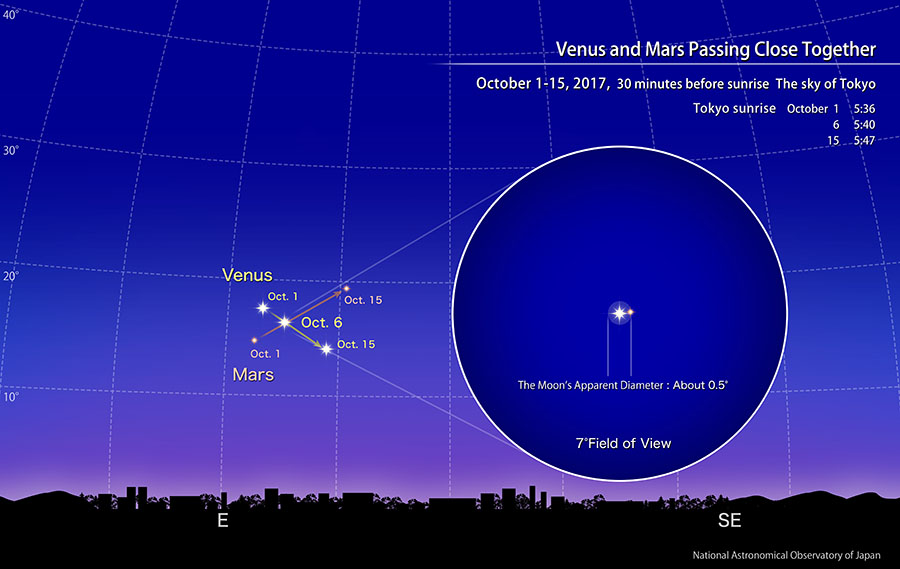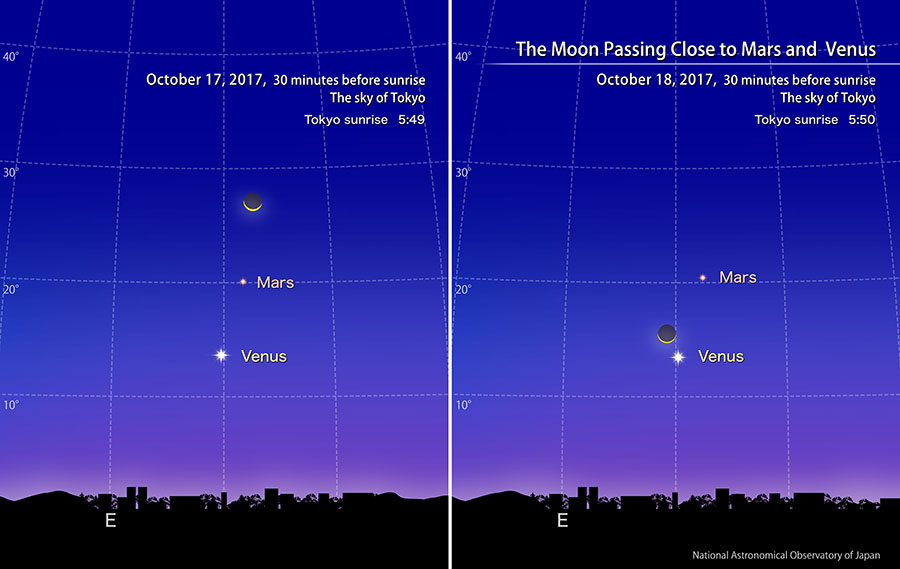Venus and Mars Passing Close Together in the Dawn (October, 2017)

Let’s Enjoy Venus and Mars Passing Close Together!
In the lower eastern sky before dawn, the morning star Venus shines with a brightness of - 3.9 magnitude. Close to Venus, the 1.8 magnitude Mars can also be seen. In early October, we can observe the spectacle of Venus and Mars approaching close together.
In the beginning of October, Mars shines lower than Venus in the sky. And as days go by, the altitude of Venus will gradually become lower and the altitude of Mars will become higher. Venus and Mars will become closer and closer day-by-day and on the 6th, they will appear as close as a quarter of 1 degree. This is about half of the apparent diameter (size) of the Moon.
Mars is 1.8 magnitude and it shines dimly. It might be hard to find Mars in the sky at 30 minutes before sunrise when it is getting light. Observing with binoculars makes it easy to find Mars. Depending on the magnification of the binoculars, you can see Venus and Mars in the same field of view for several days before and after the 6th. However, at 30 minutes before sunrise the altitudes of these planets are not higher than 20 degrees. Let's check the sunrise time beforehand and try to finish observation in good time! Do not try hard until the last minute before sunrise. After the 6th, Venus and Mars will gradually move apart.

On the 17th and the 18th, we can see a thin waning Moon close to Mars and Venus. Although these objects are located at low altitude in the eastern sky just before dawn, Venus stands out brightly so it will be easy to find them and we can see a beautiful scene.
Reference: Ephemeris Computation Office
With the “Sky Viewer” you can easily explore the appearance of a typical urban night sky (planets and constellations are visible). The Celestial Phenomena section of the glossary explains the planetary phenomena terms: greatest elongation, opposition, conjunction, stationary, etc.